Winter Seasonal Flower
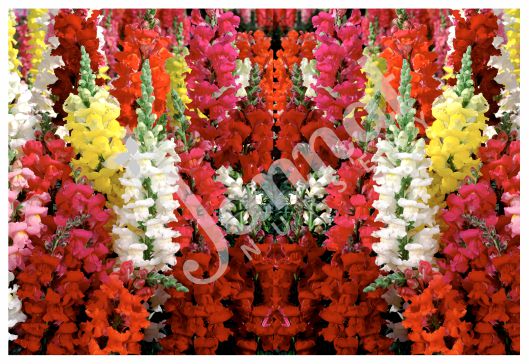
The Antirrhinum flower, commonly known as snapdragon, is a popular garden plant known for its colorful, tubular flowers that resemble the shape of a dragon’s mouth. These flowers are native to rocky areas of Europe, the United States, and North Africa.
Characteristics:
- Scientific Name: Antirrhinum majus
- Family: Plantaginaceae
- Flower Shape: The flowers have a unique “mouth” that can be opened and closed by gentle pressure on the sides, hence the name “snapdragon.”
- Colors: Red, Pink, Yellow, White, Orange, and Even Bi-Colored varieties.
- Height: Snapdragons can range from dwarf varieties (6-8 inches) to taller ones (up to 3 feet).
Growing Conditions:
- Light: Full sun to partial shade.
- Soil: Well-draining, rich, and slightly acidic soil.
- Water: Regular watering, but avoid waterlogging.
- Climate: Prefers cooler temperatures and blooms best in spring and early summer.

The Alyssum flower, often called sweet alyssum, is a charming, low-growing plant known for its delicate, fragrant blooms. It is a favorite in gardens for its ability to carpet the ground with soft colors and its sweet, honey-like fragrance.
Characteristics:
- Scientific Name: Lobularia maritima
- Family: Brassicaceae
- Flower Shape: Small, clustered blooms that form a cloud-like appearance.
- Colors: White is the most common color, but they also come in shades of pink, purple, lavender, and cream.
- Height: Typically grows about 4-8 inches tall with a spreading habit.
Growing Conditions:
- Light: Thrives in full sun but can tolerate partial shade.
- Soil: Prefers well-draining soil, though it can adapt to various soil types.
- Water: Requires moderate watering; allow the soil to dry slightly between waterings.
- Climate: Alyssum is a cool-season flower, thriving in spring and fall. It can sometimes survive mild winters in frost-free areas.
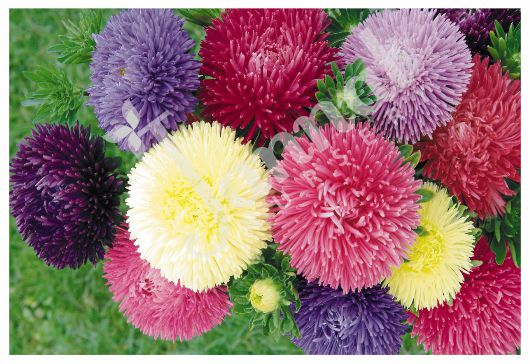
The Aster flower is a beloved garden classic, prized for its star-shaped blooms and vibrant colors that brighten up any landscape, especially in late summer and fall. They are versatile, low-maintenance plants that attract pollinators and add a touch of charm to gardens.
Characteristics:
- Scientific Name: Aster spp. (The genus includes multiple species, such as Symphyotrichum in North America.)
- Family: Asteraceae (the daisy family)
- Flower Shape: Daisy-like, with a central yellow disc surrounded by delicate, narrow petals.
- Colors: Purple, lavender, pink, blue, and white are the most common shades.
- Height: Ranges from 1 to 6 feet, depending on the variety.
Growing Conditions:
- Light: Prefers full sun but tolerates partial shade.
- Soil: Thrives in well-draining, loamy soil that’s slightly acidic to neutral.
- Water: Moderate; keep soil consistently moist but not soggy.
- Climate: Hardy in USDA zones 3-8; asters prefer cooler temperatures and often bloom in late summer to early fall.
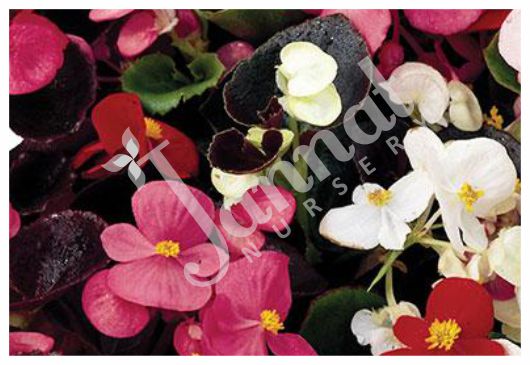
The Begonia is a diverse and vibrant group of flowering plants loved for their stunning blooms, colorful foliage, and ability to thrive in both indoor and outdoor settings. With their wide range of varieties, begonias can bring beauty to nearly any space.
Characteristics:
- Scientific Name: Begonia spp.
- Family: Begoniaceae
- Flower Shape: Asymmetrical, with delicate petals often in clusters.
- Colors: Shades of red, pink, orange, yellow, and white are common. Many varieties also have strikingly patterned or textured leaves.
- Height: Varies greatly by species, from 6 inches to over 2 feet tall.
Growing Conditions:
- Light: Prefers bright, indirect light. Some varieties tolerate partial shade or dappled sunlight.
- Soil: Well-draining soil rich in organic matter, such as a peat-based mix.
- Water: Water consistently but avoid overwatering; allow the top layer of soil to dry between waterings.
- Climate: Thrives in warm, humid conditions and is sensitive to frost. Ideal for USDA zones 9-11 outdoors, or grown as a houseplant elsewhere.
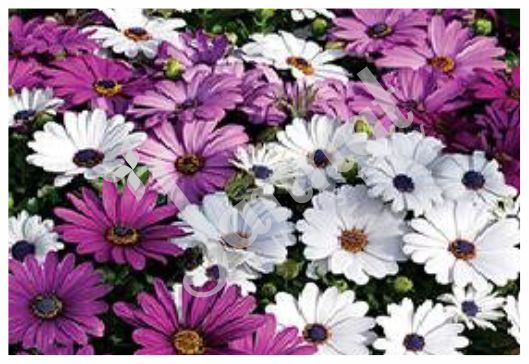
The Brachycome flower, also known as swan river daisy, is a charming and dainty plant that is perfect for adding soft colors and a delicate touch to gardens. This versatile annual or perennial (depending on climate) is beloved for its cheerful blooms and low-maintenance nature.
Characteristics:
- Scientific Name: Brachyscome iberidifolia
- Family: Asteraceae
- Flower Shape: Small, daisy-like flowers with a yellow center surrounded by narrow petals.
- Colors: Shades of lavender, blue, pink, mauve, and white.
- Height: Grows 6 to 12 inches tall, with a bushy, compact habit.
Growing Conditions:
- Light: Thrives in full sun but can tolerate partial shade.
- Soil: Prefers well-draining, sandy or loamy soil; moderately fertile soil works well.
- Water: Needs regular watering but is drought-tolerant once established. Avoid overwatering.
- Climate: Best suited to warm, temperate climates. Grown as an annual in cooler zones or as a perennial in USDA zones 9-11.
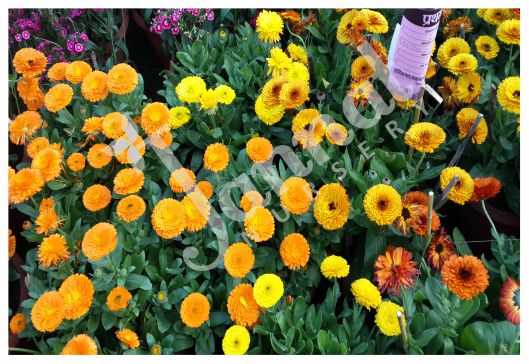
The Calendula, commonly known as pot marigold, is a bright and cheerful flowering plant that has been prized for centuries for its beauty, versatility, and medicinal properties. Its vibrant blooms add a splash of color to gardens, while its edible petals make it a favorite in herbal and culinary uses.
Characteristics:
- Scientific Name: Calendula officinalis
- Family: Asteraceae
- Flower Shape: Daisy-like, with rounded petals and a prominent center.
- Colors: Shades of yellow, orange, and gold, with some varieties having cream or apricot hues.
- Height: Typically grows 12 to 24 inches tall, depending on the variety.
Growing Conditions:
- Light: Prefers full sun but can tolerate partial shade, especially in hotter climates.
- Soil: Thrives in well-draining, moderately fertile soil.
- Water: Needs regular watering but can tolerate some drought once established.
- Climate: Cool-season plant; grows well in USDA zones 2-11. Can bloom from spring to fall in mild climates.
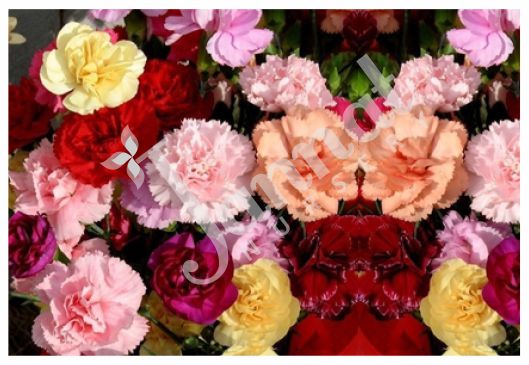
The Carnation, known for its ruffled petals and captivating fragrance, is a timeless flower often associated with love, admiration, and distinction. This versatile bloom is a favorite for bouquets, gardens, and special occasions due to its variety of colors and long-lasting nature.
Characteristics:
- Scientific Name: Dianthus caryophyllus
- Family: Caryophyllaceae
- Flower Shape: Layered, fringed petals that give a delicate, ruffled appearance.
- Colors: Red, pink, white, yellow, purple, and even bi-colored varieties. Each color often carries a symbolic meaning.
- Height: Typically grows 18 to 24 inches tall, depending on the variety.
Growing Conditions:
- Light: Prefers full sun for best growth and blooms.
- Soil: Well-draining soil with neutral to slightly alkaline pH; sandy or loamy soil works well.
- Water: Requires regular watering but does not tolerate overwatering or waterlogged soil.
- Climate: Thrives in mild climates (USDA zones 6-9) and is often grown as an annual in cooler regions.
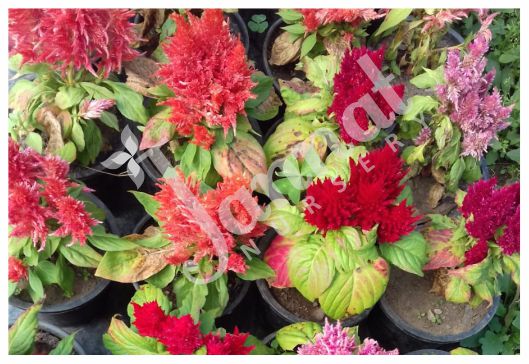
The Celosia flower, also known as cockscomb or woolflower, is a striking and vibrant plant that stands out in gardens with its unique, flame-like blooms. Its dramatic shapes and brilliant colors make it a favorite among gardeners and florists alike.
Characteristics:
- Scientific Name: Celosia argentea
- Family: Amaranthaceae
- Flower Shape: Comes in three primary forms:
- Cockscomb (Cristata): Crested, brain-like blooms.
- Plume (Plumosa): Feather-like, upright flowers.
- Spike (Spicata): Wheat-like, spiky inflorescences.
- Colors: Vibrant shades of red, pink, orange, yellow, purple, and even creamy white.
- Height: Varies by variety, from 6 inches to 3 feet tall.
Growing Conditions:
- Light: Thrives in full sun, requiring at least 6-8 hours of sunlight daily.
- Soil: Prefers well-draining, fertile soil; slightly acidic to neutral pH is ideal.
- Water: Requires moderate watering but tolerates drought once established.
- Climate: Grows best in warm climates (USDA zones 9-11). It is an annual in cooler areas but can reseed itself.
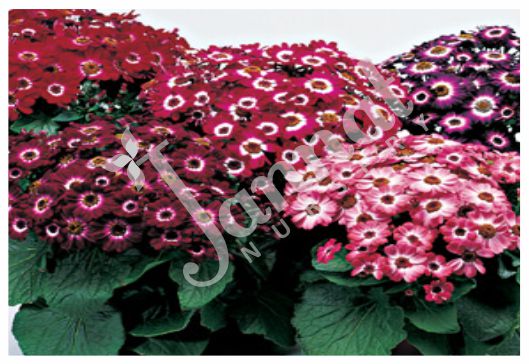
The Cineraria, a vibrant and showy flowering plant, is loved for its bright, daisy-like blooms that come in a stunning range of colors. It’s typically grown as a decorative plant for gardens, containers, or indoor displays, especially in cooler climates.
Characteristics:
- Scientific Name: Pericallis × hybrida (commonly sold as cineraria, but native species include Senecio cineraria for dusty miller)
- Family: Asteraceae
- Flower Shape: Daisy-like flowers with a central disc surrounded by symmetrical petals.
- Colors: Bright shades of purple, blue, pink, red, and white, often with contrasting centers.
- Height: Usually grows 8 to 15 inches tall, depending on the variety.
Growing Conditions:
- Light: Prefers bright, indirect light or partial shade; avoid harsh direct sunlight, which can scorch the leaves and flowers.
- Soil: Requires rich, well-draining soil with good organic content.
- Water: Keep the soil consistently moist but not soggy. It does not tolerate drought conditions.
- Climate: Thrives in cool temperatures (50–65°F/10–18°C) and is often treated as an annual. Suitable for USDA zones 9-11.
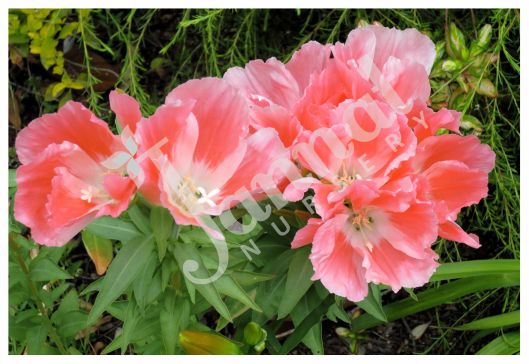
The Clarkia flower, sometimes called godetia or farewell-to-spring, is a delightful and easy-to-grow annual known for its graceful, colorful blooms. Native to western North America, this wildflower is a favorite for cottage gardens and meadow plantings due to its ability to thrive in less-than-perfect conditions.
Characteristics:
- Scientific Name: Clarkia spp. (e.g., Clarkia amoena, Clarkia unguiculata)
- Family: Onagraceae (evening primrose family)
- Flower Shape: Delicate, cup-shaped or slightly flared blooms, often with four petals.
- Colors: Shades of pink, purple, red, salmon, and white, sometimes with contrasting markings.
- Height: Ranges from 12 to 36 inches, depending on the species.
Growing Conditions:
- Light: Thrives in full sun but tolerates light shade.
- Soil: Prefers well-draining, slightly sandy or loamy soil. It can tolerate poor soils but dislikes heavy clay.
- Water: Low water requirements; drought-tolerant once established. Overwatering can harm the plant.
- Climate: Best suited for cool to warm climates, blooming in late spring to summer.
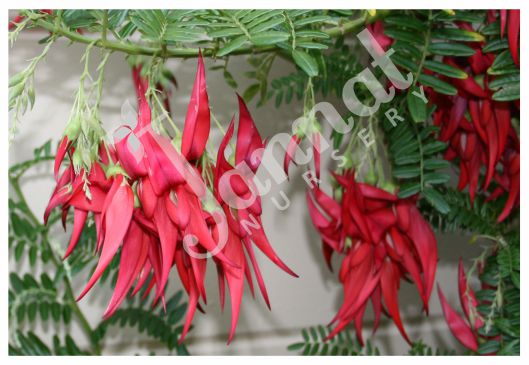
Clianthus, also known as Kaka beak or parrot’s beak, is a striking flowering plant native to New Zealand. It is celebrated for its unique, vividly colored flowers that resemble the curved beak of a parrot, making it a favorite for those looking for an unusual, showy addition to their gardens.
Characteristics:
- Scientific Name: Clianthus Puniceus
- Family: Fabaceae
- Flower Shape: The flowers are large, tubular, and curved, resembling the beak of a parrot. They often grow in clusters.
- Colors: Bright red or deep crimson, sometimes with hints of orange or yellow.
- Height: Typically grows between 4 to 6 feet tall, though some varieties can grow even taller.
Growing Conditions:
- Light: Prefers full sun but can tolerate partial shade.
- Soil: Well-draining, slightly acidic soil is ideal. It thrives in fertile, slightly sandy soils.
- Water: Moderate watering requirements. It should not be waterlogged but needs consistent moisture during the growing season.
- Climate: Best suited for temperate climates, especially in USDA zones 9-11. It’s sensitive to frost, so it may be grown as a container plant or in warmer climates.
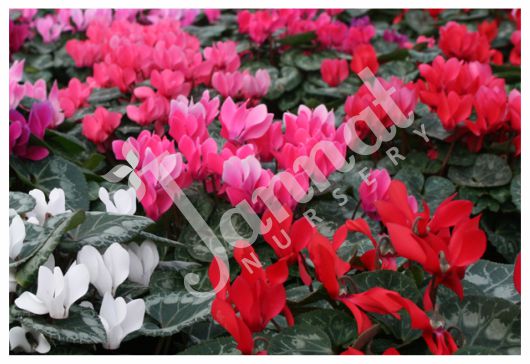
Cyclamen is a charming and unique flowering plant known for its elegant, upturned flowers and attractive, heart-shaped leaves. It’s often used as a decorative plant for both indoor and outdoor spaces, and it’s especially valued for its ability to bloom in winter or early spring when other plants are dormant.
Characteristics:
- Scientific Name: Cyclamen spp.
- Family: Primulaceae
- Flower Shape: The flowers have a distinctive shape with upward-curving petals that resemble butterflies or birds in flight.
- Colors: They come in shades of pink, purple, red, white, and even bicolor varieties.
- Height: Typically grows 6 to 12 inches tall, with some varieties spreading out more widely.
Growing Conditions:
- Light: Prefers bright, indirect light. Avoid direct sunlight, especially during summer months, as it can scorch the leaves.
- Soil: Well-draining, slightly acidic to neutral soil. A good mix for cyclamen is one that contains peat or perlite to improve drainage.
- Water: Keep the soil moist but not soggy. Water from the base of the plant to avoid getting water on the leaves, which can cause rot.
- Climate: Cyclamen prefers cooler temperatures. It can be grown as an indoor plant in colder climates but can be planted outside in mild, temperate areas.

The Daisy is a cheerful and classic flower that symbolizes purity, innocence, and new beginnings. Known for its simple yet striking appearance, the daisy has been a favorite in gardens, floral arrangements, and even in folklore for centuries.
Characteristics:
- Scientific Name: Bellis Perennis
- Family: Asteraceae
- Flower Shape: Typically consists of white petals surrounding a central yellow disc, though there are varieties in other colors (pink, yellow, orange, etc.).
- Colors: Classic white with a yellow center, but varieties can also be pink, purple, red, or even bi-colored.
- Height: Generally 6 to 24 inches tall, depending on the species or variety.
Growing Conditions:
- Light: Prefers full sun but can tolerate partial shade.
- Soil: Well-draining, moderately fertile soil is ideal. Daisies can adapt to poor soils but will bloom best in richer, slightly alkaline conditions.
- Water: Regular watering is needed, but daisies are quite drought-tolerant once established.
- Climate: Hardy depending on the species. Most daisy varieties thrive in temperate climates and bloom in late spring to summer.
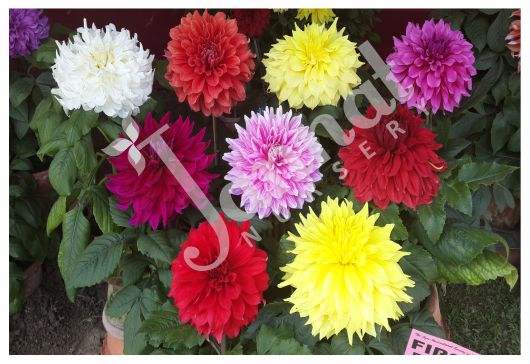
The Dahlia is a stunning and versatile flowering plant, known for its showy, vibrant blooms and impressive variety of shapes and sizes. With its broad range of colors and forms, dahlias are a favorite among gardeners and florists alike.
Characteristics:
- Scientific Name: Dahlia spp.
- Family: Asteraceae
- Flower Shape: Daisylike flowers with petals that come in various shapes, including pom-pom, cactus, or flat, with intricate arrangements. They can have one or multiple layers of petals.
- Colors: Available in almost every color imaginable: red, pink, orange, yellow, white, purple, and even bi-colored or speckled varieties.
- Height: Varies greatly depending on the variety, from compact types (12-18 inches) to towering plants (up to 6 feet or more).
Growing Conditions:
- Light: Thrives in full sun, needing at least 6-8 hours of sunlight per day to produce abundant blooms.
- Soil: Prefers well-draining, fertile soil enriched with organic matter. A slightly acidic to neutral pH (6.0–7.5) is ideal.
- Water: Requires regular watering, especially during dry spells, but needs well-drained soil to prevent root rot. Avoid wetting the foliage.
- Climate: Dahlia plants are typically grown as annuals in regions with cooler climates, but in USDA zones 8-11, they can be grown as perennials. They are sensitive to frost, so they may need to be dug up and stored over winter in colder areas.
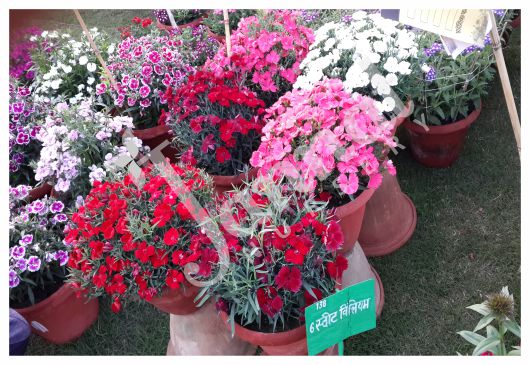
Dianthus, commonly known as Carnations or Pinks, is a genus of plants known for its fragrant, frilly flowers and long blooming period. It includes a variety of species and cultivars, making it a versatile choice for gardens and floral arrangements.
Characteristics:
- Scientific Name: Dianthus spp.
- Family: Caryophyllaceae
- Flower Shape: The flowers typically have five petals that are often fringed, ruffled, or jagged, giving them a delicate, lacy appearance.
- Colors: Available in a wide range of colors, including pink, red, white, purple, and bicolor varieties.
- Height: Ranges from compact varieties (6-12 inches) to taller ones (up to 36 inches), depending on the species or cultivar.
Growing Conditions:
- Light: Prefers full sun but can tolerate partial shade in hotter climates.
- Soil: Well-draining, fertile soil with a neutral to slightly alkaline pH. Dianthus thrives in soil enriched with organic matter.
- Water: Regular watering is needed, but the plant prefers soil that is on the drier side once established. Overwatering can lead to root rot.
- Climate: Hardy in USDA zones 3-9, depending on the species. They are often treated as annuals in colder climates but can be perennial in milder regions.
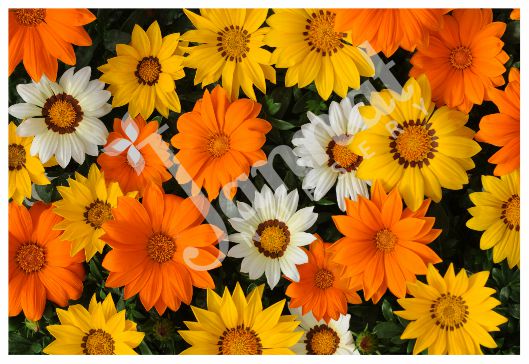
Gazania, often referred to as the Treasure Flower, is a vibrant and hardy flowering plant native to South Africa. Known for its stunning, daisy-like blooms and ability to thrive in tough conditions, Gazania is a popular choice for gardens, particularly in areas with hot, dry climates.
Characteristics:
- Scientific Name: Gazania Spp.
- Family: Asteraceae
- Flower Shape: The flowers are large, daisy-like, with a central disc and radiating petals. They often close at night or on cloudy days.
- Colors: A wide range of vibrant hues, including red, orange, yellow, white, pink, purple, and even bicolor patterns.
- Height: Typically grows 6 to 18 inches tall, depending on the variety.
Growing Conditions:
- Light: Prefers full sun and can tolerate intense heat. Gazanias will not bloom as well in the shade.
- Soil: Well-draining soil, preferably sandy or loamy. Gazanias are quite tolerant of poor soil conditions but will thrive in slightly acidic to neutral soil.
- Water: Drought-tolerant once established but benefits from occasional watering during dry spells. Overwatering can lead to root rot.
- Climate: Hardy in USDA zones 9-11. Gazanias thrive in hot, dry climates and are often used as bedding plants in warmer regions. They can be grown as annuals in cooler climates.
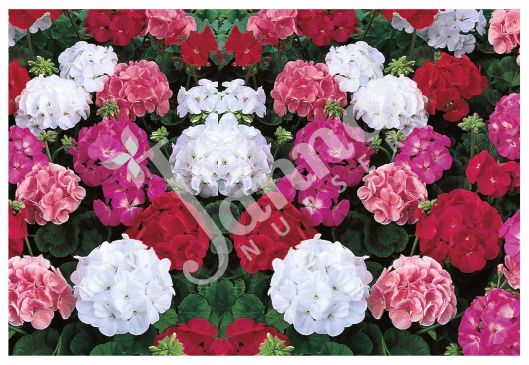
Geraniums are classic, easy-to-grow plants known for their bright, colorful flowers and versatility in gardens and containers. Often associated with summer blooms, geraniums are a popular choice for adding vibrant color and texture to outdoor spaces.
Characteristics:
- Scientific Name: Pelargonium Spp.
- Family: Geraniaceae
- Flower Shape: Flowers can be single or double, with five petals arranged symmetrically. Some varieties feature ruffled or fringed petals.
- Colors: Common colors include red, pink, white, purple, and orange, with many varieties offering bi-colored blooms.
- Height: Typically grows 12 to 18 inches tall, but certain types (like zonal geraniums) can grow up to 2 feet tall.
Growing Conditions:
- Light: Geraniums thrive in full sun, needing at least 6 hours of sunlight per day to produce abundant flowers.
- Soil: Well-draining, moderately fertile soil is ideal. Geraniums prefer slightly acidic to neutral pH (6.0–7.0).
- Water: Regular watering is needed, but geraniums do not like to sit in water. Allow the top inch of soil to dry out between waterings to prevent root rot.
- Climate: They are often treated as annuals in cooler climates and are commonly grown in pots or containers, which can be brought inside during cold weather.
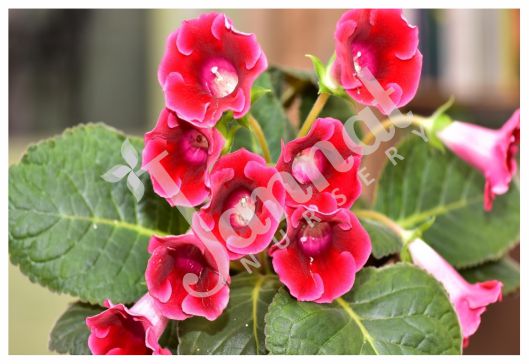
Gloxinia is a captivating flowering plant known for its stunning, trumpet-shaped blooms and velvety petals. With a wide range of colors and patterns, Gloxinia is often grown as an ornamental houseplant or in shaded garden areas.
Characteristics:
- Scientific Name: Sinningia Speciosa
- Family: Gesneriaceae
- Flower Shape: Gloxinia flowers have a bell or trumpet shape, often with ruffled or fringed edges, and their colors can vary greatly.
- Colors: Common colors include deep purple, pink, red, blue, white, and bi-colored varieties, sometimes with contrasting patterns on the petals.
- Height: Typically grows 8 to 12 inches tall, making it a compact plant ideal for containers and indoor spaces.
Growing Conditions:
- Light: Prefers bright, indirect light. Too much direct sunlight can scorch the leaves and flowers, while too little light will result in fewer blooms.
- Soil: Well-draining, rich soil, preferably a mix of peat, perlite, and a little compost. Gloxinia does best in slightly acidic conditions (pH 6.0–6.5).
- Water: Requires consistent moisture but dislikes being waterlogged. Water at the base of the plant to avoid getting the leaves or flowers wet, which can lead to rot. Let the soil dry slightly between waterings.
- Climate: Gloxinia is best grown as a houseplant in colder climates (as it is sensitive to frost) or as an annual in mild climates. It thrives in temperatures between 65°F and 75°F (18°C–24°C) and prefers high humidity.
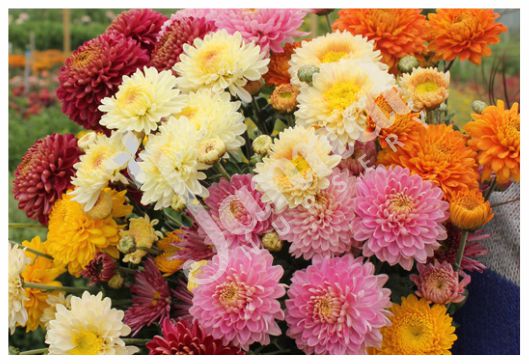
Guldaudi, commonly known as Chrysanthemum in English, is a popular flowering plant widely cultivated for its ornamental value. The word “Guldaudi” is commonly used in Persian and Urdu to refer to chrysanthemums, and it is a cherished flower in many cultures, especially in Asia.
Characteristics:
- Scientific Name: Chrysanthemum Spp.
- Family: Asteraceae
- Flower Shape: The flowers come in various forms, including daisy-like, button-shaped, pom-pom, and even spider-like varieties. The blooms can be simple or multi-petaled.
- Colors: Available in a wide range of colors, including yellow, orange, red, white, purple, pink, and even bi-colored varieties.
- Height: The plant can range from small, compact varieties (6 to 12 inches) to larger types that can grow up to 3 feet or more.
Growing Conditions:
- Light: Prefers full sun for at least 6 hours per day, although it can tolerate light shade. Sunlight promotes better blooming.
- Soil: Well-draining, fertile soil is ideal. Chrysanthemums like slightly acidic to neutral soil with good organic content.
- Water: Regular watering is needed, but the soil should not be soggy. Overwatering can cause root rot, so it’s important to allow the soil to dry slightly between waterings.
- Climate: Chrysanthemums are hardy prefer temperate climates. They can also be grown as annuals in colder regions.

Gypsophila, commonly known as baby’s breath, is a delicate and airy flowering plant prized for its tiny, cloud-like blooms. Often used as filler in floral arrangements, Gypsophila adds elegance and softness to bouquets, gardens, and landscapes.
Characteristics:
- Scientific Name: Gypsophila spp.
- Family: Caryophyllaceae
- Flower Shape: Tiny, star-shaped flowers that grow in clusters, creating a cloud-like appearance.
- Colors: Usually white, but some varieties can be pale pink or blush.
- Height: Typically grows 12 to 36 inches tall, depending on the species and variety.
Growing Conditions:
- Light: Prefers full sun, requiring at least 6 hours of sunlight per day for optimal growth.
- Soil: Well-draining soil with a slightly alkaline pH (around 7.0–7.5). Gypsophila thrives in sandy or rocky soils and tolerates poor fertility.
- Water: Requires moderate watering, but the soil should not remain soggy. Once established, it is drought-tolerant.
- Climate: Hardy in USDA zones 3-9, depending on the species. It prefers temperate climates and can be grown as an annual or perennial, depending on the variety.
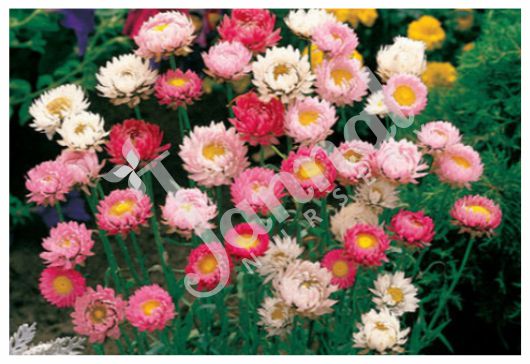
Helichrysum, commonly known as strawflower or everlasting flower, is a versatile and hardy plant known for its papery blooms that retain their color and shape even after drying. Native to Africa, Australia, and parts of Asia, Helichrysum is prized for its ornamental and practical uses in gardens and crafts.
Characteristics:
- Scientific Name: Helichrysum spp.
- Family: Asteraceae (daisy family)
- Flower Shape: The flowers are daisy-like with stiff, papery bracts surrounding the central disc. These bracts are what give the blooms their distinctive, everlasting quality.
- Colors: Vibrant hues of yellow, orange, red, pink, white, and even multicolored blooms.
- Height: Varies by species, ranging from low-growing ground covers (4-6 inches) to taller varieties (up to 3 feet).
Growing Conditions:
- Light: Thrives in full sun, requiring at least 6 hours of direct sunlight daily to produce abundant blooms.
- Soil: Prefers well-draining soil, ideally sandy or loamy. Helichrysum tolerates poor soil conditions but benefits from slightly alkaline soil.
- Water: Drought-tolerant once established. Requires moderate watering; let the soil dry out between waterings to avoid root rot.
- Climate: Hardy in USDA zones 8-11, but often grown as an annual in colder climates. It thrives in warm, dry conditions.

Hollyhocks are tall, striking flowering plants known for their vibrant blooms and old-world charm. These plants are often associated with cottage gardens and are prized for their ability to create a dramatic vertical accent.
Characteristics:
- Scientific Name: Alcea Rosea
- Family: Malvaceae
- Flower Shape: Large, saucer-shaped flowers that grow along tall, upright spikes. They can be single or double blooms.
- Colors: A wide range, including shades of pink, red, yellow, white, purple, and near-black.
- Height: Hollyhocks can grow 6 to 8 feet tall, making them one of the tallest garden flowers.
Growing Conditions:
- Light: Full sun is ideal, requiring at least 6 hours of direct sunlight daily. They can tolerate light shade but may not bloom as profusely.
- Soil: Well-draining, fertile soil with plenty of organic matter. Hollyhocks prefer a slightly alkaline to neutral pH (6.0–7.5).
- Water: Moderate watering is required. Keep the soil moist but not waterlogged, especially during dry spells.
- Climate: Hollyhocks thrive in temperate climates and are generally biennials, though some varieties can be treated as annuals or short-lived perennials.
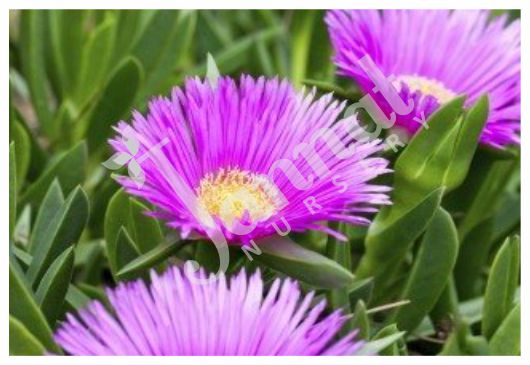
Ice Plant, known for its vibrant blooms and succulent foliage, is a hardy, low-maintenance plant often used as ground cover. Its shimmering, jewel-like flowers and drought tolerance make it a favorite for sunny, dry areas.
Characteristics:
- Scientific Name: Delosperma spp.
- Family: Aizoaceae
- Flower Shape: Dainty, daisy-like flowers with numerous narrow petals radiating from a small central disc.
- Colors: Bright shades of pink, purple, yellow, orange, white, and red.
- Height: Typically grows 3 to 6 inches tall but spreads widely, covering the ground.
Growing Conditions:
- Light: Thrives in full sun, requiring 6–8 hours of sunlight daily for optimal flowering.
- Soil: Prefers well-draining, sandy, or gravelly soil. Ice Plants do not tolerate soggy conditions.
- Water: Extremely drought-tolerant. Water sparingly, allowing the soil to dry completely between waterings.
- Climate: Hardy in USDA zones 5–11, depending on the species. It performs best in warm, arid, or Mediterranean climates but can tolerate light frosts.

Impatiens are vibrant, shade-loving flowers popular for their colorful blooms and ease of care. Perfect for adding splashes of color to shady spots in gardens, patios, and hanging baskets, they are among the most widely grown bedding plants.
Characteristics:
- Scientific Name: Impatiens Spp.
- Family: Balsaminaceae
- Common Names: Touch-me-not, Busy Lizzie, Patience plant, Jewelweed.
- Flower Shape: Flat, open-faced flowers with five petals, often with a small spur at the back.
- Colors: Available in shades of pink, red, orange, white, lavender, coral, and bi-colors.
- Height: Varies by species, typically 6 to 24 inches tall.

Kalanchoe is a popular genus of succulents known for its attractive foliage and clusters of vibrant, long-lasting flowers. They are low-maintenance plants, making them ideal for both indoor and outdoor settings. Their hardiness and cheerful blooms make them a favorite among gardeners and houseplant enthusiasts.
Characteristics:
- Scientific Name: Kalanchoe spp.
- Family: Crassulaceae
- Common Names: Widow’s-thrill, Flaming Katy, Panda Plant, Air Plant.
- Flower Shape: Small, tubular flowers that form in dense clusters above the foliage.
- Colors: Bright shades of red, pink, yellow, orange, purple, and white.
- Height: Typically 6 to 18 inches tall, depending on the species and variety.
Growing Conditions:
- Light: Thrives in bright, indirect sunlight indoors. Outdoors, it prefers full sun to partial shade.
- Soil: Requires well-draining soil, such as a cactus or succulent mix. Avoid water-retentive soils.
- Water: Water sparingly. Allow the soil to dry out completely between waterings to prevent root rot.
- Climate: Kalanchoe prefers warm, dry climates but can be grown indoors in cooler regions.
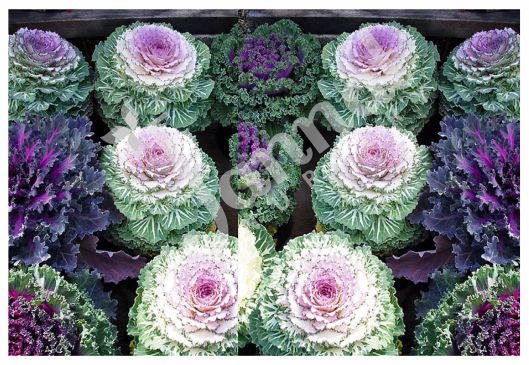
Kale is a nutrient-packed, hardy leafy green vegetable known for its versatility in the kitchen and its ability to thrive in cool weather. A member of the cabbage family, kale is a staple in healthy diets and ornamental gardening alike.
Characteristics:
- Scientific Name: Brassica oleracea (Acephala group)
- Family: Brassicaceae (mustard family)
- Common Names: Leaf cabbage, Borecole
- Leaf Shape: Curly, flat, or frilled leaves that grow in a loose rosette.
- Colors: Shades of green, blue-green, and even deep purple or red.
- Height: Grows 12 to 36 inches tall, depending on the variety.
Growing Conditions:
- Light: Thrives in full sun but tolerates partial shade, especially in hotter climates.
- Soil: Prefers well-draining, fertile soil rich in organic matter, with a slightly acidic pH (6.0–7.0).
- Water: Requires consistent moisture but does not tolerate waterlogged soil.
- Climate: Kale is a cool-weather crop that grows best in temperatures between 55°F and 75°F. Frost improves its flavor, making the leaves sweeter.
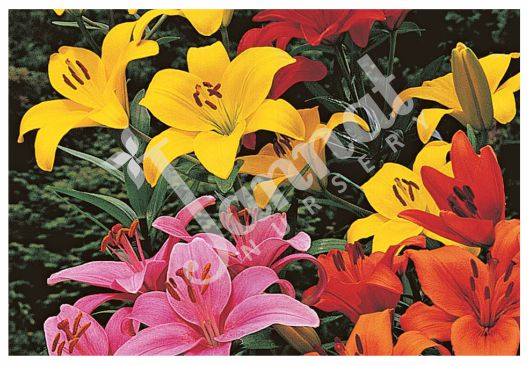
Lilium, commonly known as lilies, are elegant and fragrant flowering plants cherished for their trumpet-shaped blooms and symbolic beauty. Lilies are popular in gardens, floral arrangements, and bouquets due to their striking appearance and wide variety of colors.
Characteristics:
- Scientific Name: Lilium spp.
- Family: Liliaceae
- Common Names: Lily
- Flower Shape: Large, trumpet-shaped, star-shaped, or bowl-shaped flowers with six petals.
- Colors: White, pink, orange, yellow, red, purple, and even bi-color varieties.
- Height: Varies from 2 to 8 feet, depending on the species and variety.
Growing Conditions:
- Light: Prefers full sun to partial shade. Ensure at least 6 hours of sunlight for optimal blooms.
- Soil: Well-draining, fertile soil with a slightly acidic to neutral pH (6.0–7.0). Lilies do not tolerate soggy conditions.
- Water: Regular watering is needed to keep the soil moist but not waterlogged, especially during the growing season.
- Climate: Hardy in USDA zones 4–9, depending on the variety. Lilies thrive in temperate climates.
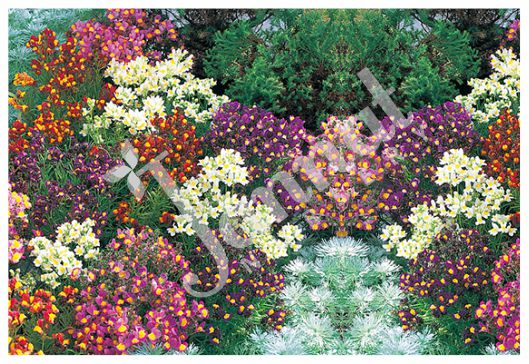
Linaria, commonly known as toadflax, is a charming flowering plant with delicate, snapdragon-like blooms. It is valued for its colorful flowers, fast growth, and versatility in gardens, particularly in wildflower meadows and cottage gardens.
Characteristics:
- Scientific Name: Linaria spp.
- Family: Plantaginaceae
- Common Names: Toadflax, Wild Snapdragon, Butter-and-Eggs (for some species).
- Flower Shape: Small, tubular flowers resembling snapdragons, with spurs at the base.
- Colors: Purple, pink, yellow, orange, white, and bicolor combinations.
- Height: Varies from 6 inches to 3 feet, depending on the species.
Growing Conditions:
- Light: Thrives in full sun but tolerates partial shade.
- Soil: Prefers well-drained soil but adapts to poor, sandy, or rocky conditions.
- Water: Requires moderate watering; drought-tolerant once established.
- Climate: Hardy in USDA zones 4–9. It thrives in temperate climates and grows as an annual or perennial depending on the species and region.
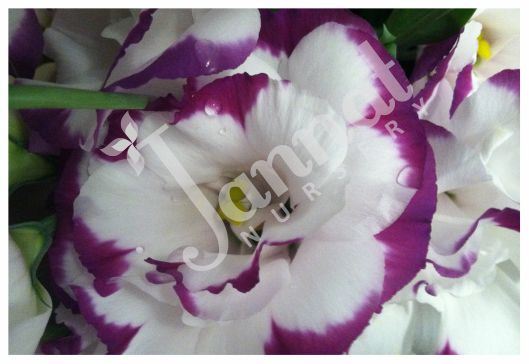
Lisianthus, also known as Eustoma, is a stunning flowering plant prized for its rose-like blooms and elegant appearance. Native to the warm regions of the Americas, Lisianthus is a favorite for gardens, floral arrangements, and wedding bouquets due to its delicate beauty and wide range of colors.
Characteristics:
- Scientific Name: Eustoma grandiflorum
- Family: Gentianaceae
- Common Names: Lisianthus, Prairie Gentian, Texas Bluebell
- Flower Shape: Large, funnel-shaped blooms with ruffled edges that resemble roses.
- Colors: White, pink, purple, blue, cream, lavender, and bi-colored varieties.
- Height: 12–36 inches, depending on the variety.
Growing Conditions:
- Light: Prefers full sun to partial shade. In hotter climates, it benefits from afternoon shade.
- Soil: Well-draining soil with a neutral to slightly alkaline pH (6.5–7.0). Lisianthus dislikes heavy, waterlogged soils.
- Water: Water regularly but avoid overwatering. Allow the topsoil to dry slightly between watering.
- Climate: Grown as an annual in cooler climates. Lisianthus thrives in warm, dry conditions.

French Marigold (Tagetes patula) is a vibrant, easy-to-grow flowering plant popular for its bright blooms and ability to repel garden pests. Native to Central and South America, it’s a garden staple for borders, flower beds, and companion planting.
Characteristics:
- Scientific Name: Tagetes Patula
- Family: Asteraceae
- Common Names: French Marigold
- Flower Shape: Small, round, and densely packed blooms with layered petals.
- Colors: Shades of orange, yellow, red, and bi-color combinations.
- Height: 6–18 inches, making it more compact than other marigold varieties.
Growing Conditions:
- Light: Thrives in full sun but tolerates partial shade.
- Soil: Prefers well-draining, moderately fertile soil with a neutral to slightly acidic pH.
- Water: Water regularly to keep the soil moist, but avoid waterlogging. Drought-tolerant once established.
- Climate: Grows as an annual in most regions but can thrive year-round in tropical climates.
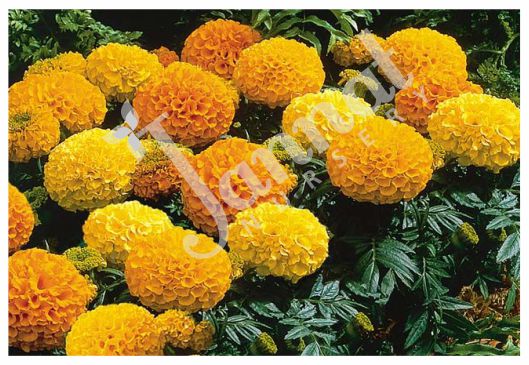
African Marigold is a bold and robust flowering plant known for its large, showy blooms. These marigolds are taller and more upright than their French counterparts, making them excellent for garden displays and cut flowers. Despite the name, African Marigolds are native to Central and South America.
Characteristics:
- Scientific Name: Tagetes erecta
- Family: Asteraceae
- Common Names: African Marigold, Aztec Marigold, Big Marigold
- Flower Shape: Large, pom-pom-shaped double blooms with ruffled petals.
- Colors: Bright shades of yellow, orange, gold, and creamy white.
- Height: 18–48 inches, making them taller and more prominent than French Marigolds.
Growing Conditions:
- Light: Requires full sun for best blooms.
- Soil: Prefers well-draining soil with moderate fertility and a neutral to slightly acidic pH (6.2–7.0).
- Water: Water regularly but avoid overwatering. Allow the soil to dry slightly between watering.
- Climate: Grows as an annual in most regions and thrives in USDA zones 2–11. These marigolds tolerate heat and dry conditions well.

Mimulus, commonly known as Monkey Flower, is a diverse genus of flowering plants that add charm to gardens with their vibrant, trumpet-shaped blooms. The name “monkey flower” comes from the supposed resemblance of the flowers to a monkey’s face. These plants thrive in a variety of habitats, from moist areas to rocky terrain.
Characteristics:
- Scientific Name: Mimulus spp.
- Family: Phrymaceae
- Common Names: Monkey Flower, Musk Flower
- Flower Shape: Trumpet-shaped, with a wide-open, bilobed mouth.
- Colors: Yellow, red, orange, pink, purple, white, and spotted or bi-colored varieties.
- Height: Ranges from 6 inches to 2 feet, depending on the species.
Growing Conditions:
- Light: Thrives in full sun to partial shade.
- Soil: Prefers moist, well-draining soil rich in organic matter. Some species tolerate wet or boggy conditions.
- Water: Regular watering is essential; some species can even grow in shallow water.
- Climate: Hardy in USDA zones 4–10, depending on the variety. Annual and perennial species are available.
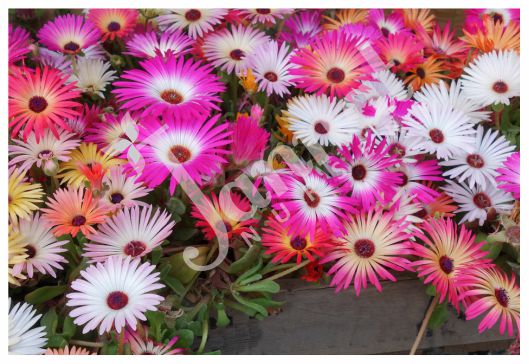
Mesembryanthemum, commonly known as Ice Plant, is a genus of succulent plants renowned for their vibrant, daisy-like flowers and fleshy, shimmering foliage. The name “Mesembryanthemum” comes from Greek words meaning “midday flower,” as the blooms often open fully in bright sunlight. These drought-tolerant plants are a favorite for rock gardens, sunny slopes, and ground covers.
Characteristics:
- Scientific Name: Mesembryanthemum spp.
- Family: Aizoaceae
- Common Names: Ice Plant, Baby Sun Rose, Carpet Weed
- Flower Shape: Daisy-like, with narrow, colorful petals radiating from a central disc.
- Colors: Pink, red, orange, yellow, purple, and white, often with a metallic sheen.
- Height: Low-growing, typically 4–12 inches tall, spreading up to several feet.
Growing Conditions:
- Light: Thrives in full sun; blooms may remain closed in cloudy or shaded conditions.
- Soil: Prefers sandy, well-draining soil. It tolerates poor soils but does not do well in heavy, clay-rich soil.
- Water: Extremely drought-tolerant; water sparingly, allowing the soil to dry out between waterings.
- Climate: Best suited for USDA zones 8–11. In colder zones, it is often grown as an annual or in containers that can be moved indoors during frost.
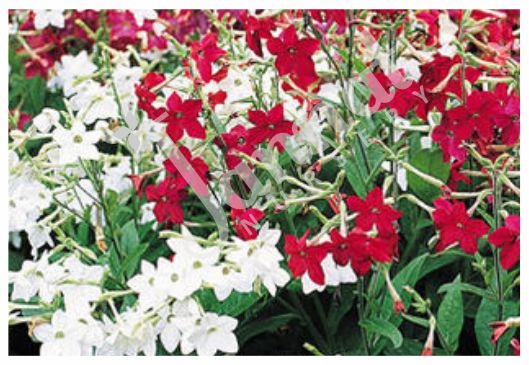
Nicotiana, commonly known as Tobacco Plant, is a genus of flowering plants that are admired for their fragrant blooms, which can be seen in gardens, containers, and hanging baskets. While some species are used for producing tobacco, ornamental varieties are popular for their decorative qualities and pleasant fragrance.
Characteristics:
- Scientific Name: Nicotiana spp.
- Family: Solanaceae (nightshade family)
- Common Names: Tobacco Plant, Flowering Tobacco
- Flower Shape: Funnel or tubular-shaped flowers, often drooping or hanging.
- Colors: White, pink, red, purple, green, and yellow. Some varieties have bi-colored blooms.
- Height: Varies by species, typically 1–4 feet tall.
Growing Conditions:
- Light: Prefers full sun but can tolerate some partial shade, especially in hotter climates.
- Soil: Well-drained, moderately fertile soil. Tolerates poor soils but thrives in enriched, slightly acidic soil.
- Water: Needs regular watering but is somewhat drought-tolerant once established. Avoid waterlogging.
- Climate: Hardy in USDA zones 9–11; generally treated as an annual in cooler climates.
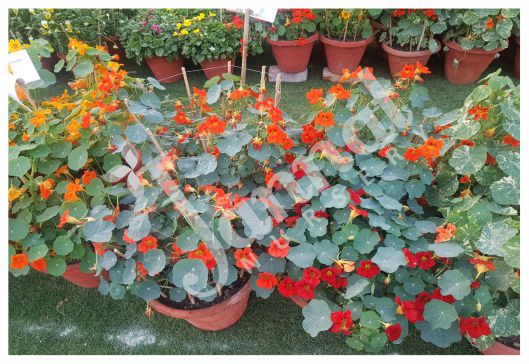
Nasturtium is a colorful and versatile annual plant that’s known for its bright, cheerful flowers and edible leaves and blooms. It’s a favorite in both ornamental gardens and kitchens due to its easy care, striking appearance, and ability to attract pollinators.
Characteristics:
- Scientific Name: Tropaeolum spp.
- Family: Tropaeolaceae
- Common Names: Nasturtium, Indian Cress, Garden Nasturtium
- Flower Shape: Simple, funnel-shaped flowers with five petals that can be upright or drooping.
- Colors: A wide range of colors, including red, orange, yellow, pink, and bi-color variations.
- Height: 6 inches to 10 feet, depending on the variety (climbing or trailing types).
Growing Conditions:
- Light: Prefers full sun to partial shade. In hot climates, a little afternoon shade can help prevent scorching.
- Soil: Well-draining, moderately fertile soil. They can tolerate poor soil, but avoid overly rich soil as it may result in excessive foliage growth at the expense of flowers.
- Water: Water regularly, especially in dry spells, but allow the soil to dry slightly between waterings. Overwatering can lead to root rot.
- Climate: Typically grown as an annual in cooler climates.
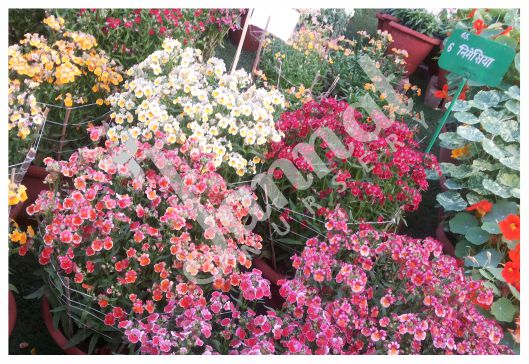
Nemesia is a charming, low-growing annual or perennial plant known for its colorful and delicate flowers. Often used in bedding and hanging baskets, Nemesia is perfect for adding vibrant hues and sweet fragrance to gardens. It comes in a variety of colors, from soft pastels to bold, bright tones.
Characteristics:
- Scientific Name: Nemesia spp.
- Family: Scrophulariaceae
- Common Names: Nemesia, Chasing Rainbow, Cape Nemesia
- Flower Shape: Small, tubular flowers with five petals that form a “lip” shape.
- Colors: Shades of purple, pink, white, red, orange, yellow, and even bi-colored varieties.
- Height: 6–12 inches, with a spreading or bushy growth habit.
Growing Conditions:
- Light: Prefers full sun but can tolerate partial shade, especially in warmer climates.
- Soil: Well-draining, moderately fertile soil. Nemesia thrives in slightly acidic to neutral soil (pH 6.0–7.0).
- Water: Regular watering is essential, particularly during hot spells, but avoid waterlogging. Let the soil dry out slightly between waterings.
- Climate: Often grown as an annual in cooler climates.
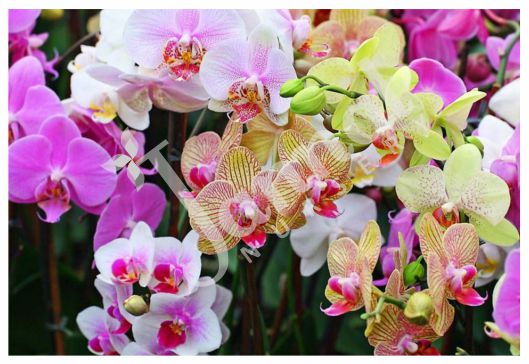
Orchid is one of the largest and most diverse families of flowering plants, comprising thousands of species and hybrids. Orchids are celebrated for their stunning and intricate flowers, making them popular as ornamental houseplants, garden specimens, and cut flowers. With a range of colors, shapes, and patterns, orchids are symbols of beauty, luxury, and refinement.
Characteristics:
- Scientific Name: Orchidaceae Family
- Common Names: Orchid
- Flower Shape: Unique, often asymmetrical flowers with three outer petals and a distinctive central lip (labellum).
- Colors: Orchids come in nearly every color imaginable—white, pink, purple, yellow, red, orange, green, and even blue or multicolored varieties.
- Size: Orchids vary greatly in size, from tiny species with flowers just a few millimeters across to large hybrids with blooms several inches wide.
- Fragrance: Many orchids are fragrant, with scents ranging from sweet and floral to spicy and citrus-like, although not all varieties have a strong fragrance.
Growing Conditions:
- Light: Most orchids prefer bright, indirect light. Direct sunlight can scorch their leaves, while too little light will prevent blooming.
- Temperature: Orchids generally thrive in temperatures between 65°F and 75°F (18°C to 24°C) during the day and slightly cooler at night.
- Humidity: Orchids prefer a humid environment (50-70%), so misting, humidity trays, or a humidifier can help if growing them indoors.
- Soil: Orchids grow best in well-draining, airy growing media such as bark, sphagnum moss, or a specialized orchid mix. They do not do well in regular potting soil.
- Watering: Water orchids when the medium feels dry to the touch. Avoid letting water sit in the crown or on the leaves, as this can lead to rot. Most orchids like to be watered once a week, but it depends on the species and environment.
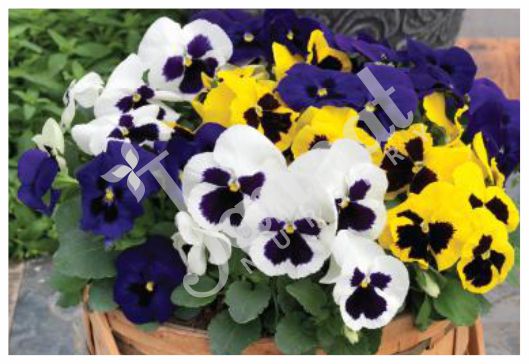
Pansy is a beloved flowering plant known for its vibrant, multicolored blooms that resemble a face. Pansies are commonly grown as annuals and are a great addition to cool-season gardens, providing cheerful color in early spring or fall. With their wide variety of colors, shapes, and patterns, pansies are perfect for borders, containers, and hanging baskets.
Characteristics:
- Scientific Name: Viola tricolor var. hortensis
- Family: Violaceae
- Common Names: Pansy
- Flower Shape: Rounded petals, often with a “face” pattern on the lower petal.
- Colors: Pansies come in almost every color, including purple, blue, yellow, red, white, orange, and combinations of these colors. Some varieties have “faces” with darker centers or contrasting edges.
- Size: Typically 6–9 inches tall, with blooms 2–4 inches wide.
Growing Conditions:
- Light: Pansies thrive in full sun to partial shade, with cooler temperatures being preferable. In hotter climates, partial shade helps prolong bloom time.
- Soil: Pansies prefer well-draining, fertile soil rich in organic matter. Slightly acidic to neutral soil (pH 6.0–7.0) is ideal.
- Water: Keep the soil consistently moist but not waterlogged. Pansies don’t like dry conditions, so water regularly, especially during dry spells.
- Climate: Hardy in USDA zones 6–10, pansies are often grown as cool-season annuals, blooming in early spring or fall in cooler climates. They may not thrive during hot summer months.
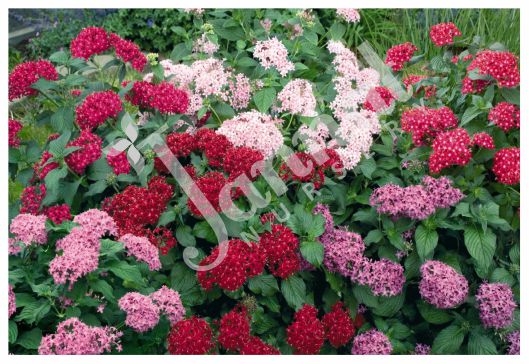
Pentas (Pentas lanceolata) is a vibrant, heat-tolerant flowering plant known for its star-shaped blooms and ability to attract pollinators like butterflies and hummingbirds. With its dense clusters of small, colorful flowers, pentas are perfect for adding bright, long-lasting color to gardens, containers, and hanging baskets.
Characteristics:
- Scientific Name: Pentas lanceolata
- Family: Rubiaceae
- Common Names: Pentas, Star Flower
- Flower Shape: Star-shaped flowers that cluster together in tight, dense bunches.
- Colors: Pentas come in shades of pink, red, purple, white, and lavender.
- Size: Typically 18–36 inches tall, though some varieties can grow taller.
- Blooming Season: They bloom from spring to fall, providing long-lasting color during the warm months.
Growing Conditions:
- Light: Full sun to partial shade. Pentas thrive in full sunlight, though they can tolerate a bit of afternoon shade, especially in hotter climates.
- Soil: Well-draining, moderately fertile soil. Pentas do well in slightly acidic to neutral soil (pH 6.0–7.0).
- Water: Regular watering is necessary, especially during dry spells. Allow the soil to dry out slightly between waterings, as pentas do not like to sit in waterlogged conditions.
- Temperature: Pentas are heat-loving plants that thrive in warm climates. They are hardy in USDA zones 9–11 but can be grown as annuals in cooler regions.
- Humidity: They enjoy moderate to high humidity, which makes them a great choice for tropical or subtropical gardens.

Petunia (Petunia genus) is a popular flowering plant known for its vibrant, colorful blooms and versatility in the garden. Petunias are often grown as annuals, and they provide long-lasting color in hanging baskets, containers, and garden beds throughout the growing season. Their wide range of colors, patterns, and sizes make them a favorite for gardeners looking to add brightness to their landscapes.
Characteristics:
- Scientific Name: Petunia
- Family: Solanaceae
- Common Names: Petunia
- Flower Shape: Funnel-shaped flowers with a smooth or ruffled edge. The flowers can be single or double, depending on the variety.
- Colors: Petunias come in almost every color, including purple, pink, red, white, yellow, blue, and multicolored patterns. Some varieties feature contrasting centers or “throat” patterns.
- Size: Petunias typically grow between 6–18 inches in height, with trailing varieties reaching up to 24 inches or more.
- Blooming Season: Petunias bloom from spring through fall, providing a long season of vibrant color.
Growing Conditions:
- Light: Petunias thrive in full sun, requiring at least 6 hours of direct sunlight per day. In shadier areas, they may not flower as profusely.
- Soil: Well-draining, slightly acidic to neutral soil (pH 6.0–7.0). Petunias prefer fertile soil with good organic content.
- Water: Petunias like to be watered regularly, but they do not tolerate standing water. Keep the soil moist but well-drained. Watering at the base of the plant helps avoid fungal diseases.
- Temperature: Petunias are warm-season plants and grow best in temperatures between 60°F and 85°F (15°C to 29°C). They are sensitive to frost, so wait until after the last frost to plant them.
- Humidity: Petunias tolerate moderate humidity but may struggle in very wet, humid conditions. Good air circulation helps prevent fungal diseases.

Phlox is a popular flowering plant known for its vibrant, fragrant blooms and versatility in the garden. With species that thrive in both sun and partial shade, phlox is a great choice for borders, meadows, or woodland gardens. It’s available in a range of colors and forms, from ground covers to tall, dramatic blooms, making it suitable for various garden styles.
Characteristics:
- Scientific Name: Phlox spp.
- Family: Polemoniaceae
- Common Names: Phlox
- Flower Shape: Star-shaped flowers with five petals, often in clusters or panicles.
- Colors: White, pink, red, purple, lavender, and bi-colored varieties.
- Height: 12–36 inches, depending on the species.
Growing Conditions:
- Light: Full sun to partial shade, depending on the variety. Tall phlox prefers full sun, while creeping and woodland phlox thrive in partial shade.
- Soil: Well-draining, moderately fertile soil. Rich, loamy soil is ideal for most phlox varieties.
- Water: Regular watering is essential, especially during dry spells. Phlox prefers consistently moist soil, but it must be well-drained to avoid root rot.
- Climate: Hardy in USDA zones 3–9, depending on the species.

Poppy is a captivating flowering plant known for its delicate, papery petals and vibrant colors. These iconic blooms are cherished in gardens, wildflower meadows, and cultural symbolism worldwide. Poppies are easy to grow, attract pollinators, and add a touch of whimsy and charm to any landscape.
Characteristics:
- Scientific Name: Papaver spp.
- Family: Papaveraceae
- Common Names: Poppy, Field Poppy, Corn Poppy
- Flower Shape: Cup-shaped flowers with crinkled petals and a prominent seed pod in the center.
- Colors: Red, orange, yellow, white, pink, and purple, often with contrasting centers.
- Height: 12–36 inches, depending on the species.
Growing Conditions:
- Light: Full sun (6–8 hours daily) for best flowering.
- Soil: Well-draining soil, sandy or loamy, with a neutral to slightly alkaline pH.
- Water: Moderate; drought-tolerant once established. Avoid overwatering.
- Climate: Hardy in USDA zones 3–10, depending on the species.

Pompon Dahlia is a delightful variety of dahlia characterized by its perfectly rounded, ball-like flowers composed of tightly arranged, rolled petals. These charming blooms are a favorite for both gardens and floral arrangements due to their unique appearance, vibrant colors, and long-lasting flowers.
Characteristics:
- Scientific Name: Dahlia Pinnata (Pompon group)
- Family: Asteraceae
- Common Names: Pompon Dahlia, Ball Dahlia
- Flower Shape: Globular, with tightly packed, rounded petals that curve inward, giving a perfectly spherical appearance.
- Colors: Red, pink, yellow, orange, white, purple, and bi-colored varieties.
- Size: Blooms are typically 2–3 inches in diameter, and plants reach a height of 3–4 feet.
Growing Conditions:
- Light: Requires full sun for optimal blooming (6–8 hours daily).
- Soil: Well-draining, fertile soil enriched with organic matter. Prefers a slightly acidic to neutral pH (6.0–7.0).
- Water: Moderate, consistent watering; avoid waterlogging. Water deeply to encourage strong root growth.
- Climate: Best grown as a perennial in USDA zones 8–11. In cooler climates, tubers must be lifted and stored over winter.

Primula is a charming and colorful genus of flowering plants that herald the arrival of spring. Known for their delicate blooms and variety of forms, Primulas are highly versatile and thrive in gardens, woodland settings, and containers. They are loved for their vibrant colors, compact growth habit, and ability to brighten up shady spots.
Characteristics:
- Scientific Name: Primula spp.
- Family: Primulaceae
- Common Names: Primrose, Cowslip, Polyanthus
- Flower Shape: Cup-shaped, often clustered or borne on single stems.
- Colors: Yellow, pink, purple, red, white, blue, and bi-colored varieties.
- Height: 6–12 inches, depending on the species.
Growing Conditions:
- Light: Prefers partial shade but can tolerate full sun in cooler climates.
- Soil: Moist, well-draining soil rich in organic matter. Prefers slightly acidic to neutral soil (pH 5.5–7.0).
- Water: Requires consistent moisture; do not let the soil dry out.
- Climate: Hardy in USDA zones 3–8, depending on the species. Thrives in cooler, temperate climates.

Ranunculus (Ranunculus asiaticus) is a stunning flowering plant known for its vibrant, layered, rose-like blooms. Popular in gardens, bouquets, and floral arrangements, Ranunculus is prized for its long-lasting flowers and wide range of colors. It’s an excellent choice for both spring gardens and cut flower enthusiasts.
Characteristics:
- Scientific Name: Ranunculus Asiaticus
- Family: Ranunculaceae
- Common Names: Persian Buttercup, Ranunculus
- Flower Shape: Double or semi-double, cup-shaped blooms with numerous overlapping petals.
- Colors: White, yellow, pink, red, orange, purple, and bi-colored varieties.
- Height: 12–24 inches tall, depending on the variety.
Growing Conditions:
- Light: Prefers full sun (6–8 hours of direct sunlight daily).
- Soil: Well-draining, sandy or loamy soil rich in organic matter. Slightly acidic to neutral soil is ideal (pH 6.0–7.0).
- Water: Moderate watering; keep the soil evenly moist but not soggy.
- Climate: Best suited for cool climates or as a spring annual in USDA zones 8–11. Can be grown in colder zones by planting indoors or in containers.
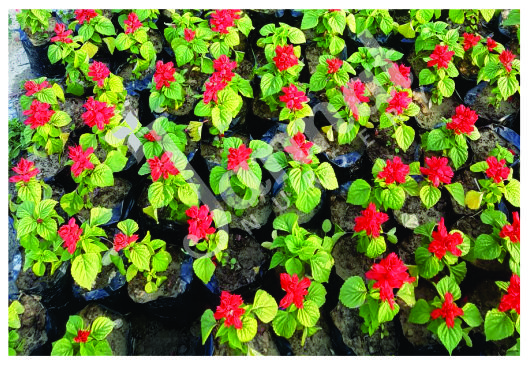
Salvia (Salvia spp.), commonly known as sage, is a diverse genus of plants prized for their vibrant flowers, aromatic foliage, and adaptability. Salvia species are beloved by gardeners for their ease of care, drought tolerance, and ability to attract pollinators like bees, butterflies, and hummingbirds. They are a favorite in borders, pollinator gardens, and containers.
Characteristics:
- Scientific Name: Salvia spp.
- Family: Lamiaceae (Mint family)
- Common Names: Salvia, Sage
- Flower Shape: Tubular flowers in upright spikes or clusters.
- Colors: Blue, purple, red, pink, white, yellow, and even bi-colored varieties.
- Height: Ranges from 12 inches to over 5 feet, depending on the species.
Growing Conditions:
- Light: Prefers full sun (6–8 hours daily) but tolerates light shade.
- Soil: Well-draining soil, sandy or loamy, with a neutral to slightly alkaline pH.
- Water: Drought-tolerant once established; water moderately.
- Climate: Hardy in USDA zones 4–11, depending on the species.
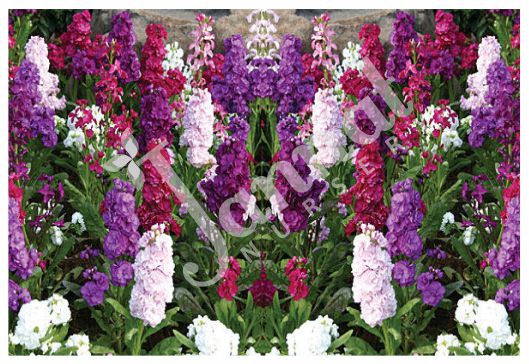
Stock is a beautiful, fragrant flowering plant often grown as an annual or biennial. It is cherished for its colorful blooms and sweet, clove-like fragrance, making it a popular choice for cottage gardens, borders, and floral arrangements. Stock adds charm and elegance to gardens, especially in spring and early summer.
Characteristics:
- Scientific Name: Matthiola incana
- Family: Brassicaceae (Mustard family)
- Common Names: Stock, Gillyflower
- Flower Shape: Dense spikes of small, four-petaled flowers.
- Colors: Shades of pink, purple, white, red, yellow, and lavender.
- Height: 12–36 inches, depending on the variety.
Growing Conditions:
- Light: Prefers full sun to partial shade.
- Soil: Well-draining, fertile soil with a neutral to slightly alkaline pH (6.5–8.0).
- Water: Requires regular watering to keep the soil consistently moist but not soggy.
- Climate: Thrives in cool weather and is hardy in USDA zones 7–10. In warmer climates, stock is grown as a winter annual.

Strawberry is a beloved fruit-bearing plant known for its sweet, juicy berries. Strawberries are versatile, easy to grow, and perfect for gardens, containers, or hanging baskets. They are perennial plants that produce fruits rich in vitamins, antioxidants, and flavor.
Characteristics:
- Scientific Name: Fragaria × ananassa
- Family: Rosaceae
- Common Names: Strawberry, Garden Strawberry
- Fruit Description: Small, heart-shaped fruits with tiny seeds on the surface and a bright red color when ripe.
- Flowers: Small white or pink flowers with yellow centers.
- Plant Size: Compact plants, 6–12 inches tall, with a spreading habit due to runners.
Growing Conditions:
- Light: Full sun (6–8 hours of direct sunlight daily).
- Soil: Well-draining, loamy soil rich in organic matter. Prefers slightly acidic soil (pH 5.5–6.8).
- Water: Consistent watering is essential, especially during flowering and fruiting. Keep the soil moist but not waterlogged.
- Climate: Strawberries thrive in temperate climates.

Torenia is a charming, low-maintenance annual plant that is perfect for adding vibrant color to shady or semi-shady spots in your garden. Known for its delicate, trumpet-shaped flowers, it is sometimes called the “Wishbone Flower” because of the wishbone-like stamens inside the blooms. Torenia is ideal for borders, containers, and hanging baskets.
Characteristics:
- Scientific Name: Torenia fournieri
- Family: Linderniaceae
- Common Names: Wishbone Flower, Bluewings
- Flower Shape: Small, trumpet-shaped flowers with a prominent “throat.”
- Colors: Shades of blue, purple, pink, yellow, and white, often with contrasting colors in the center.
- Height: 6–12 inches tall with a spreading or bushy habit.
Growing Conditions:
- Light: Prefers partial shade to full shade, though it can tolerate morning sun in cooler climates.
- Soil: Moist, well-draining soil rich in organic matter.
- Water: Requires regular watering to keep the soil consistently moist but not waterlogged.
- Climate: Thrives in warm, humid conditions and is hardy in USDA zones 10–11; grown as an annual in cooler regions.
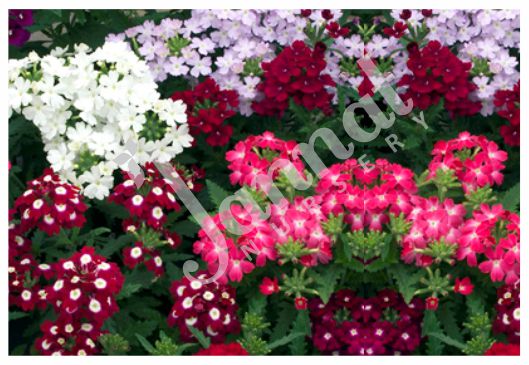
Verbena is a popular and versatile flowering plant known for its vibrant blooms and long-lasting flowers. It is loved by gardeners for its ability to thrive in various conditions, including heat and drought, making it perfect for borders, containers, and hanging baskets. Verbena is also a magnet for pollinators like butterflies and bees.
Characteristics:
- Scientific Name: Verbena spp.
- Family: Verbenaceae
- Common Names: Verbena, Vervain
- Flower Shape: Small, tubular flowers arranged in clusters or umbels.
- Colors: A wide range, including pink, purple, red, blue, white, and bi-color varieties.
- Height: 6–24 inches, depending on the species and variety.
Growing Conditions:
- Light: Thrives in full sun; at least 6–8 hours of direct sunlight daily.
- Soil: Prefers well-draining, moderately fertile soil. Tolerates sandy and rocky soils.
- Water: Requires regular watering until established; moderately drought-tolerant once mature.
- Climate: Hardy in USDA zones 7–11; often grown as an annual in cooler regions.
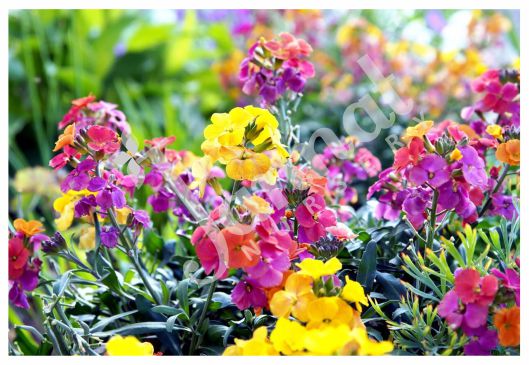
Wallflower (Erysimum spp.) is a hardy and cheerful plant that adds a burst of color and fragrance to gardens, especially in the spring. Known for their ability to thrive in poor, rocky soils and cling to walls or crevices, these versatile flowers are a favorite for cottage gardens, borders, and rockeries.
Characteristics:
- Scientific Name: Erysimum spp.
- Family: Brassicaceae (mustard family)
- Common Names: Wallflower, Cheiranthus
- Flower Shape: Small, four-petaled flowers in clusters atop upright stems.
- Colors: Shades of yellow, orange, red, pink, purple, and even bi-colored varieties.
- Height: 12–24 inches, depending on the variety.
Growing Conditions:
- Light: Thrives in full sun but can tolerate light shade.
- Soil: Well-draining, sandy, or rocky soil. They prefer alkaline to neutral soil but can adapt to slightly acidic conditions.
- Water: Drought-tolerant once established; water sparingly and allow the soil to dry between waterings.
- Climate: In cooler climates, they are often grown as annuals or biennials.

